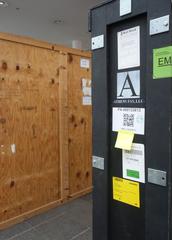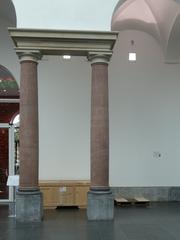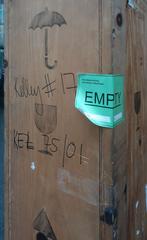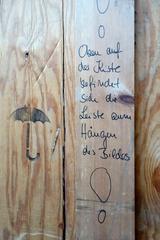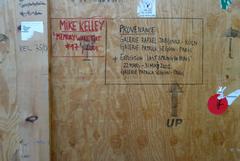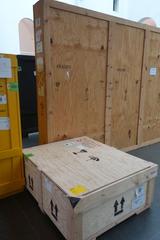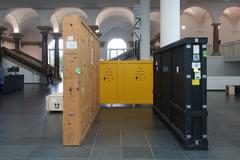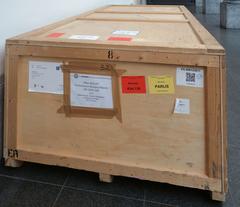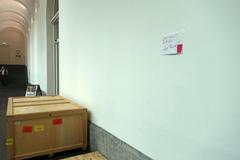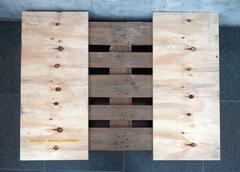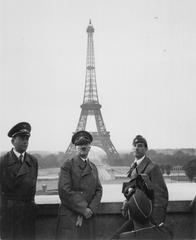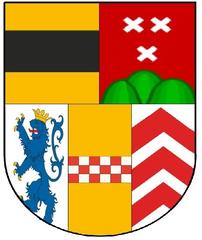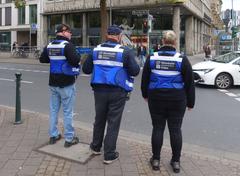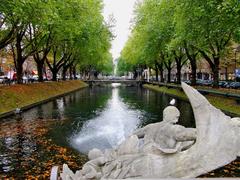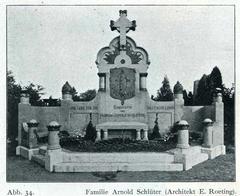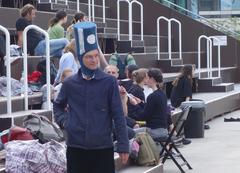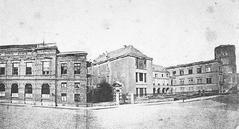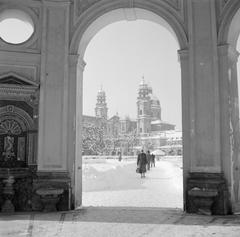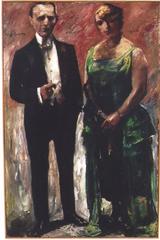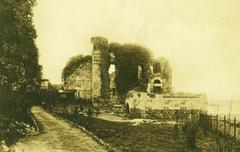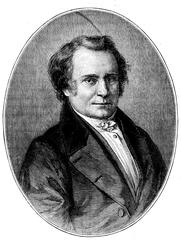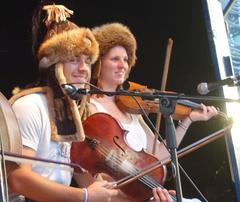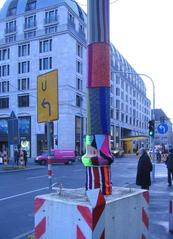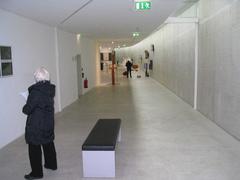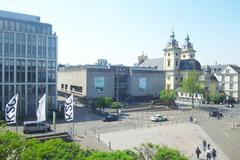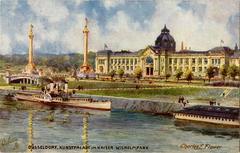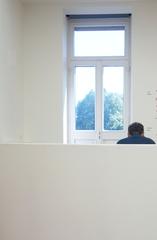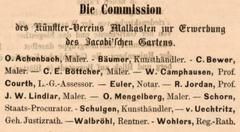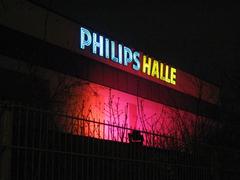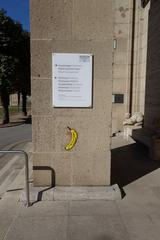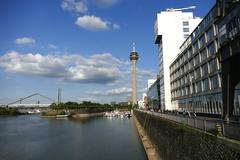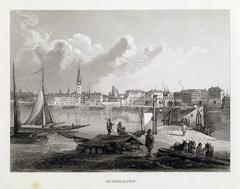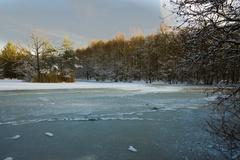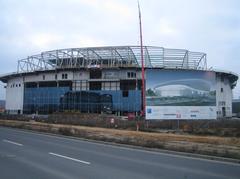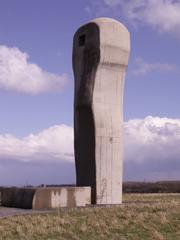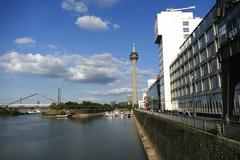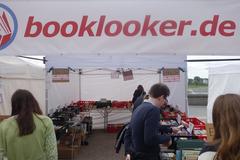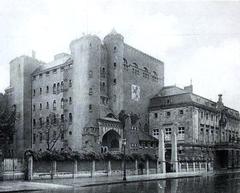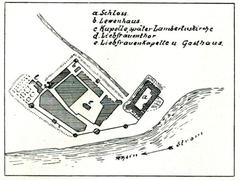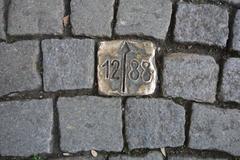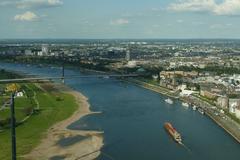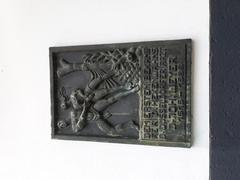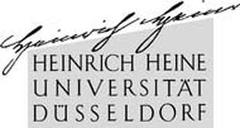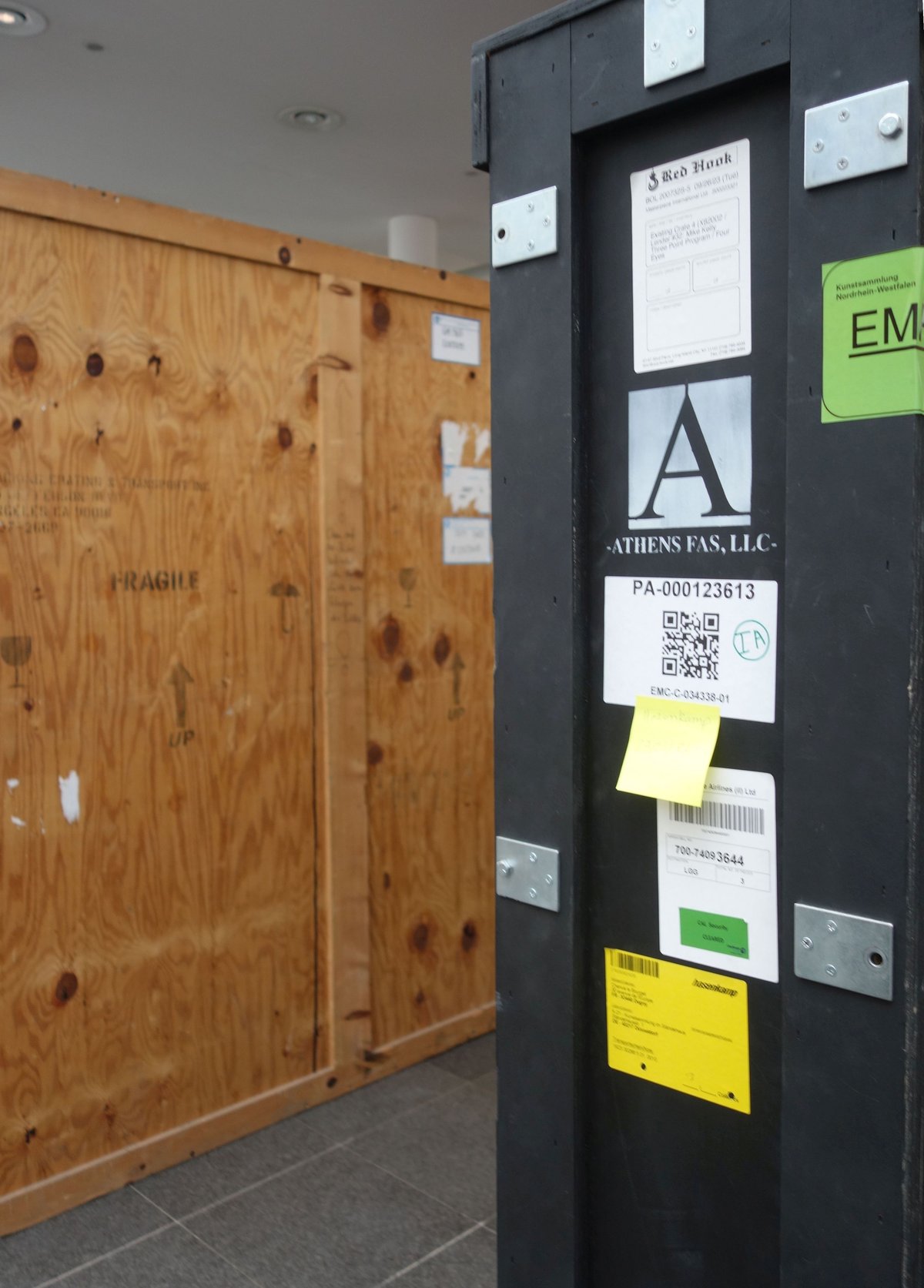
Complete Guide to Ständehaus Düsseldorf K21: Visiting Hours, Tickets, and Attractions
Date: 14/06/2025
Introduction
The Ständehaus Düsseldorf—now celebrated as K21—stands as a compelling intersection of political history, striking architecture, and avant-garde contemporary art. Located at the heart of Düsseldorf and nestled beside the tranquil Kaiserteich pond, this Neo-Renaissance masterpiece has transitioned from being the seat of regional parliament to becoming one of Germany’s most dynamic venues for 21st-century artistic innovation. Today, K21 is a pillar of the Kunstsammlung Nordrhein-Westfalen, drawing visitors from around the world with its blend of historical significance, architectural splendor, and world-class exhibitions.
This comprehensive guide covers all facets of visiting the Ständehaus Düsseldorf K21, including practical details like opening hours and ticketing, as well as in-depth insights into its history, architecture, collection highlights, and visitor amenities. Whether you are a history buff, art enthusiast, or first-time traveler to Düsseldorf, this guide will help you plan a seamless and enriching experience.
For the most current details, always consult the official Kunstsammlung Nordrhein-Westfalen website and the city’s tourism portal.
Table of Contents
- Historical Overview
- K21 as a Center for Contemporary Art
- Cultural Significance and Community Engagement
- Artistic Innovation and Multimedia Experiences
- The Ständehaus in Düsseldorf’s Art Ecosystem
- Visiting Information
- Visitor Amenities and Museum Highlights
- Unique Experiences at K21
- Visitor Tips
- Frequently Asked Questions (FAQ)
- Conclusion and Final Tips
- Sources
Historical Overview
Origins and Construction (1876–1880)
Ständehaus Düsseldorf was constructed between 1876 and 1880, designed by Julius Raschdorff as the seat of the Rhenish Provincial Parliament. Embodying the Neo-Renaissance style, its four-winged structure surrounds a central piazza, exemplifying civic pride and reflecting Düsseldorf’s political and architectural ambitions of the era. The building’s arcades and symmetric proportions were intended to evoke stability and gravitas, with the parliamentary chamber as its focal point (baukunst-nrw.de).
Political Significance (1880–1988)
Upon completion, the Ständehaus operated as the regional assembly’s headquarters. Following World War II, Düsseldorf became the capital of North Rhine-Westphalia (NRW), and the Ständehaus served as the provisional Landtag (state parliament) until 1988. This period saw the building host key political decisions shaping postwar NRW, making it a symbol of democratic renewal (timeout.com).
Renovation and Transformation (1988–2002)
After the parliament relocated, the Ständehaus stood largely unused until 1995, when the government initiated plans to renovate it as a contemporary art venue. The Munich-based firm Kiessler + Partner led a sensitive yet innovative transformation, highlighted by a vast glass dome that now floods the interior with natural light and offers panoramic city views. The project preserved the building’s historic character while creating 5,300 m² of flexible exhibition space (museum.de).
K21 and the Kunstsammlung Nordrhein-Westfalen
Reopened in 2002 as K21, the building became a cornerstone of the Kunstsammlung Nordrhein-Westfalen, Germany’s premier state art collection. The Ständehaus now hosts major contemporary art exhibitions, installations, and events, maintaining a dialogue between Düsseldorf’s political past and its vibrant cultural present (kunstsammlung.de).
K21 as a Center for Contemporary Art
Collection and Exhibitions
K21 is dedicated to contemporary art from the late 20th century to today, complementing the classical modernism focus of its sister museum K20. The collection includes works by international luminaries such as Candida Höfer, William Kentridge, Tomás Saraceno, and Nam June Paik. Major installations—like Reinhard Mucha’s “Das Deutschlandgerät” and Tomás Saraceno’s walkable “in orbit” net—exemplify the museum’s commitment to immersive and experimental art (thecrazytourist.com).
Exhibitions rotate regularly, ensuring fresh experiences for repeat visitors. The museum also hosts temporary shows, solo retrospectives, and themed group exhibitions that explore current artistic trends (germanytravel.blog).
Architecture and Atmosphere
The juxtaposition of Neo-Renaissance grandeur and contemporary glass-and-steel design creates a unique ambience. The central glass dome, composed of nearly 2,000 panels, crowns a spacious piazza and provides a dramatic setting for art and events (en.wikipedia.org).
Cultural Significance and Community Engagement
A Hub for Dialogue and Exchange
K21 serves as a lively cultural hub, hosting events that foster dialogue between artists, curators, and the public. Regular programs include artist talks, lectures, and the Ständehaus-Treff, a major networking event for the local arts and business communities (rp-online.de).
Integration with Urban Life
Set within the Ständehauspark, a six-hectare green space designed by Maximilian Weyhe, the museum encourages visitors to experience art both indoors and outdoors. The park’s historical water features and contemporary sculptures create a tranquil urban oasis (visitduesseldorf.de).
Artistic Innovation and Multimedia Experiences
K21 is at the forefront of multimedia and experimental art, with exhibitions featuring video installations, interactive environments, and digital projections. This approach attracts a wide audience and reflects the interdisciplinary spirit of contemporary art (visitduesseldorf.de).
The museum also prioritizes education, offering guided tours, workshops, and outreach programs for all ages. Collaborations with schools and community groups ensure broad access to art and creative learning opportunities.
The Ständehaus in Düsseldorf’s Art Ecosystem
K21 is a vital part of Düsseldorf’s cultural landscape, complementing leading institutions such as K20, Museum Kunstpalast, Hetjens Museum, and NRW Forum. Together, these venues position Düsseldorf as a premier European art destination and facilitate cross-institutional collaborations (whichmuseum.com).
Visiting Information
Location and Directions
- Address: Ständehausstraße 1, 40217 Düsseldorf, Germany (official site)
- Public Transport: U-Bahn stations Graf-Adolf-Platz and Kirchplatz (lines 706, 708, 709, U71, U72, U73, U83); tram and bus stops nearby.
- Parking: Limited nearby; recommended garages on Friedrichstrasse, Herzogstrasse, and GAP 15 (duesseldorf-local.de).
Opening Hours
- Tuesday–Sunday: 11:00–18:00
- Closed Mondays
- Special Events: Extended hours and free entry on first Wednesdays of the month (“Open House. The KPMG Art Evening,” 18:00–22:00) (kunstsammlung.de)
Ticket Prices
- Adults: €12 (standard), €10 (general admission, varies by exhibition)
- Reduced: €6 (students, seniors)
- Children (up to 17): Free
- Groups: Discounts for 10+ persons
- Combined K20+K21 Tickets: Available (ticket shop)
- DüsseldorfCard: Offers discounts and free public transport (lebegeil.de)
Accessibility
- Fully wheelchair accessible with elevators and ramps to all floors.
- Accessible restrooms and cloakrooms on every level.
- Wheelchairs available upon request (museum accessibility).
Visitor Amenities and Museum Highlights
- Cloakroom: Staffed and secure.
- Restrooms: Accessible on all floors.
- Museum Shop: Art books, catalogs, gifts, and design objects.
- Café/Bar: Pardo’s café, designed by Jorge Pardo, offers light meals, coffee, and pastries in an artistic setting (K21 experience).
- Free Wi-Fi throughout the museum.
- Reference Library: Available upon request.
Unique Experiences at K21
“In Orbit” Installation
Tomás Saraceno’s “in orbit” is a signature attraction: a walkable net suspended 25 meters above the central piazza. Visitors aged 12+ can climb and explore among air-filled spheres, with safety equipment provided. Advance booking is essential (thecrazytourist.com).
Panoramic Glass Dome
The stunning glass dome atop the building offers sweeping views over Düsseldorf—ideal for photography and a highlight for architecture lovers (de.wikipedia.org).
Visitor Tips
- Plan Ahead: Check the K21 website for current exhibitions and event schedules.
- Best Times: Visit on weekday mornings or during extended evening hours to avoid crowds.
- Photography: Allowed in permanent exhibitions (no flash); check specific rules for temporary shows.
- Combine Your Visit: Explore the adjacent park, Altstadt, or Königsallee shopping boulevard for a full Düsseldorf experience.
- Families: Free entry for under-18s and engaging workshops for children.
- Etiquette: Large bags must be checked; only bottled water allowed in galleries.
Frequently Asked Questions (FAQ)
Q: What are the K21 Ständehaus visiting hours?
A: Tuesday–Sunday, 11:00–18:00; closed Mondays. Extended hours and free admission on first Wednesdays monthly (opening hours).
Q: How can I purchase tickets?
A: Buy online via the official ticket shop or at the museum entrance.
Q: Is K21 fully accessible?
A: Yes; elevators, ramps, and accessible restrooms are available.
Q: Are guided tours available?
A: Yes, in German and English; book in advance for groups or special topics.
Q: Can I visit the ‘in orbit’ installation?
A: Yes, for visitors aged 12+ with an advance booking due to limited capacity.
Conclusion and Final Tips
The Ständehaus Düsseldorf K21 is a vibrant testament to the city’s ability to blend heritage and innovation. Its transformation from a Neo-Renaissance parliamentary seat to a leading center for contemporary art encapsulates Düsseldorf’s dynamic evolution. Visitors can admire the architectural grandeur, experience world-class exhibitions, and engage with interactive installations—all within a lively urban park setting.
To make the most of your visit:
- Check current hours and ticket options
- Book tickets and guided tours in advance for popular exhibitions and the “in orbit” installation
- Pair your visit with nearby attractions and enjoy the cultural vibrancy of Düsseldorf
Enhance your experience by downloading the Audiala app for audio guides and interactive maps. Stay updated through our social media for the latest exhibitions and events. We look forward to welcoming you to one of Düsseldorf’s most iconic cultural landmarks!
Sources
- Kunstsammlung Nordrhein-Westfalen website
- Visit Düsseldorf – Ständehaus Park
- Baukunst NRW – K21 Ständehaus Project
- Timeout Düsseldorf – Most Beautiful Buildings in Düsseldorf
- RP Online – Ständehaus-Treff Cultural Event
- Germany Travel Blog – Düsseldorf Art Museums
- The Crazy Tourist – Best Things to Do in Düsseldorf
- Wikipedia – Kunstsammlung Nordrhein-Westfalen
- Düsseldorf Local – Ständehaus K21 Visitor Information
- Lebegeil – Sehenswürdigkeiten in Düsseldorf
